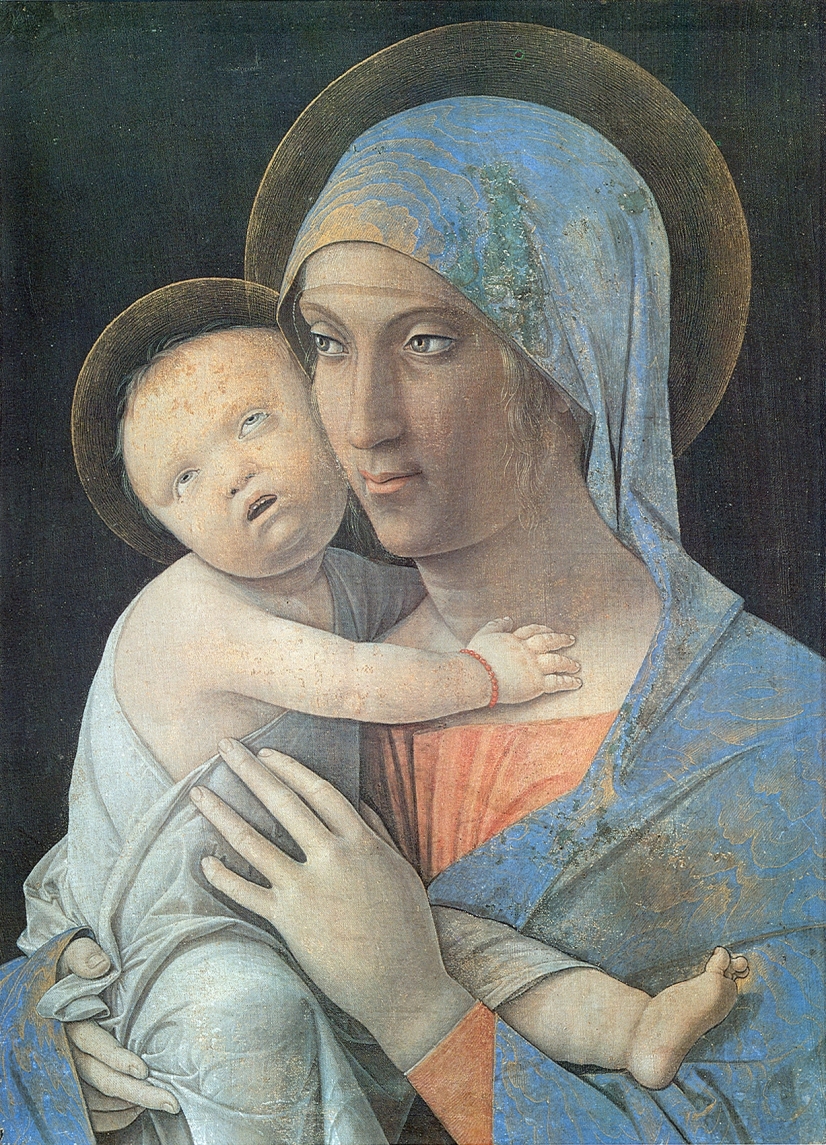At last night's evening service, we were shown some religious art depicting the adoration of the Magi. Among the works shown were a couple that had been modelled by people known to the artist, among them children or adults with what we would nowadays term Downs Syndrome. I recalled that I had recently seen some Madonna and Child art that went a stage further, and depicted the Christ Child as having Downs Syndrome.
Take a moment to appreciate that enormity of this... that 500 years ago (or thereabouts) it was seen as OK to depict Christ thus, with an extra chromosome, a 'mistake' in his makeup, without anyone getting het up about perfection and spotless sinlessness.
Times have changed, Downs Syndrome has been named, stigmatised, destigmatised, restigmatised and more. We have become accustomed to seeing Jesus portrayed by people of colour and a lot of people have encountered a Christa (female being crucified) to the point that its shock value is largely lost. But a 'maimed' or chromosomally rare Jesus, whether visible or invisibly unusual, that's not something I've come across beyond these early Downs portrayals.
What does it mean to be in the image of God for people whose chromosomes are not typically arranged? What does it mean to see a protrayal of the infant Christ that looks like 'us' - or that looks like 'them'?
A Christ with Downs syndrome, a Christ with androgen insensitivity syndrome, a Christ with BRCA1 or BRCA2, a Christ with an auto-immune condition, a Christ with dissociative personality disorder or gender dysphoria, an amputee Christ, a Christ born blind or deaf, a Christ with learning disabilities...
The list is endless and the questions complex and unanswerable. Not good enough to say that cancer or diabetes or leprosy or mental health conditions are all the product of sin or sinfulness, even if, on a global and historical measure, that is,partly at least, true. Not good enough to reduce Christ to a perfect (whatever that means) male locked in time in space, when the eternal nature of God defies that. Not good enough to think we ever get a handle on this, let alone understand it.
For now, though, just take a moment to sit with the beautiful image of a Madonna and Child painted around 1460 by an artist called Mantegna and marvel at the Christ in whose face we glimspe something of God.

Comments
I agree, Catriona. That Madonna and Child is not only one of the most beautiful I have ever seen it is also one of the most tender and loving. And who defines what is perfect?